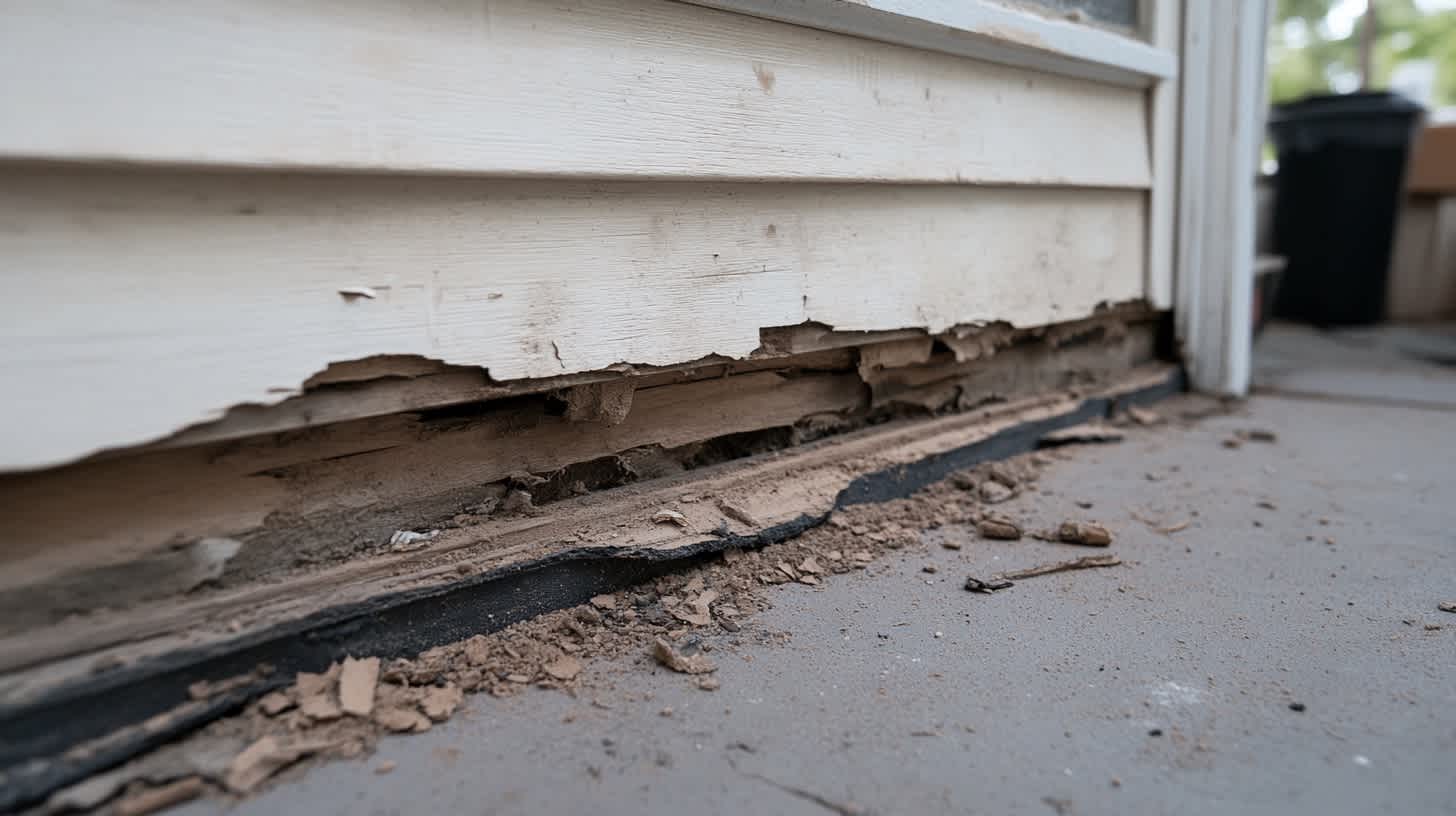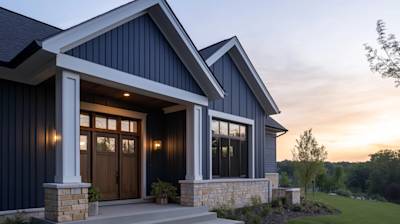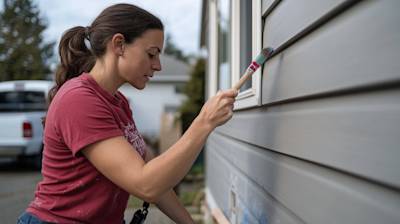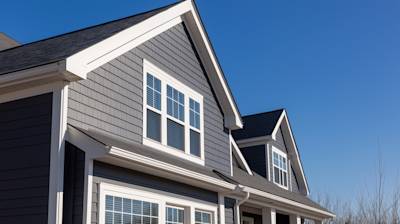If you've noticed damage to the exterior of your home, particularly on your siding, you might be dealing with more than just weather wear and tear. Termites can be the hidden culprits behind significant siding damage, potentially compromising your home's structural integrity if not promptly addressed. Understanding the signs of siding termite damage is crucial in protecting your property from these silent destroyers.
Understanding Termites and Their Impact on Siding
Termites are wood-eating insects that thrive in dark, moist environments. Different types of termites, such as subterranean, drywood, and dampwood termites, can infest your home, including your siding. Each type of termite has unique characteristics and may target various parts of your siding depending on its material and condition. Recognizing how to tell if you have termites in your siding is essential to prevent further damage.
Subterranean termites, for example, are known to build colonies in the soil and then construct mud tubes to reach above-ground wood sources, such as your siding. Drywood termites, on the other hand, don’t require contact with soil and can infest dry wood, often found in siding, window frames, and door frames. Dampwood termites are attracted to moist wood, so if your siding has been exposed to excessive moisture or water damage, it becomes an ideal target.
Signs of Termite Damage to Siding
Termites are often hidden, making it challenging to identify an infestation in its early stages. However, there are several signs you can watch for to determine if your siding has been compromised by termites:
-
Hollowed or Bubbling Siding: Tap on your siding and listen for a hollow sound. Termites often eat the wood from the inside out, leaving a thin, outer shell. Bubbling or peeling paint may also indicate underlying termite activity.
-
Swollen or Warped Siding: Moisture from termite tunnels can cause your siding to swell or warp, especially if it's made of wood. This warping can distort the appearance of your home and create gaps where termites can enter.
-
Visible Mud Tubes: Subterranean termites build mud tubes along the foundation of your home to access your siding. These tubes provide them with moisture and protection as they move between their colony and their food source.
-
Small Holes or Frass: Drywood termites leave behind tiny exit holes and small piles of frass (termite droppings) that resemble sawdust. These signs are often found near the points where termites have burrowed into your siding.
Additionally, if you notice that the siding feels soft or crumbles easily when touched, it’s a clear indication that termites may have already compromised the wood structure. You might also spot discarded wings near windows or other light sources, as these are left behind by termite swarmers, the reproductive members of a colony. Such signs should not be ignored, as they often suggest an active infestation.
Types of Siding Susceptible to Termite Damage
While termites can damage almost any type of siding, some materials are more susceptible than others. Understanding which siding types are at risk can help you better protect your home:
Wood Siding
Wood siding is the most vulnerable to termite damage. Termites are naturally attracted to wood, and if your siding is made of cedar, pine, or another wood type, it may be a prime target for these pests. Regular inspections and maintenance are essential to catch any signs of termite activity early.
Composite Siding
Composite siding, made from wood fibers and resins, is also susceptible to termites. While it may offer more resistance than natural wood, termites can still penetrate it, especially if it has been damaged by moisture or aging. The cellulose in the composite materials provides a food source for termites, making it essential to monitor any cracks or damages that could allow termites access.
Vinyl and Fiber Cement Siding
Vinyl and fiber cement siding are generally more resistant to termites, but they are not entirely immune. Termites can enter through gaps, cracks, or damaged areas, and once inside, they can start attacking the wooden structures beneath the siding. This is particularly true if the installation was not done properly, leaving small entry points for termites to exploit.
Another critical point to consider is that termites can find their way to your siding through landscaping elements like mulch or wooden structures that are in direct contact with your home. Ensuring that these elements are properly maintained and not in direct contact with your siding can help minimize the risk of termites finding their way into your home.
Professional Help for Siding Termite Damage
If you've noticed any signs of termite damage on your siding, it's crucial to contact a professional pest control service immediately. They can conduct a thorough inspection, confirm the presence of termites, and recommend the appropriate treatment to eliminate the infestation and prevent future problems. Ignoring these signs can lead to more severe damage that could require extensive and costly repairs.
Professional pest control companies use a variety of methods to detect and treat termite infestations. These can include baiting systems, chemical treatments, and even advanced technologies like infrared imaging to detect termite activity behind your walls. A professional will also assess the extent of the damage to determine if any structural repairs are needed, particularly if the termites have compromised critical support areas behind your siding.
Preventing Termite Damage to Your Siding
While knowing how to identify siding termite damage is important, prevention is the best approach. Here are some measures you can take to protect your siding from termites:
-
Keep Siding Dry: Termites thrive in moist environments, so ensure your siding is properly sealed and any leaks are promptly repaired. Regularly clean gutters and downspouts to prevent water from accumulating near your home's foundation. Ensuring that your siding is well-maintained and free from cracks or holes can prevent termites from gaining easy access to your home.
-
Use Termite-Resistant Materials: Consider using termite-resistant siding materials such as fiber cement or treated wood when building or renovating your home. These materials are less appealing to termites and can act as a first line of defense. Additionally, using metal flashing around vulnerable areas like windows and doors can further protect your siding from termite entry points.
-
Regular Inspections: Schedule regular inspections by a professional to catch any signs of termites before they cause significant damage. Early detection is key to preventing extensive repairs. Professionals can also apply preventive treatments around your home’s perimeter to create a chemical barrier that deters termites from entering your property.
-
Landscaping Considerations: Keep mulch, wood piles, and other cellulose materials away from your siding. These materials can attract termites and provide them with a bridge to your home. Maintaining a clear zone around your home’s foundation, free of organic debris, can reduce the chances of termites reaching your siding.
Frequently Asked Questions: Siding Termite Damage
Can termites damage all types of siding?
Yes, while wood siding is the most vulnerable, termites can damage almost any type of siding, including composite, vinyl, and fiber cement, if they find a way inside. The key is to prevent termites from accessing your siding in the first place by maintaining it properly and using termite-resistant materials where possible.
What are the most common signs of termite damage on siding?
Look for hollow sounds when tapping on the siding, bubbling or peeling paint, swollen or warped siding, visible mud tubes, small holes, and termite frass near the siding. Also, be on the lookout for any areas where the siding appears soft or crumbly, as this could indicate that termites have already done significant internal damage.
How can I prevent termites from damaging my siding?
Keep your siding dry, use termite-resistant materials, and schedule regular inspections by a professional pest control service to catch any early signs of infestation. Additionally, ensure that any landscaping materials, like mulch, are kept away from your home's foundation to minimize the risk of attracting termites.
What should I do if I suspect termite damage to my siding?
Contact a professional pest control service immediately for an inspection. They can confirm whether termites are present and recommend treatment options to eliminate the infestation. In some cases, they may also suggest repairs to any damaged siding or structural elements to prevent future infestations.
Can termites affect the structural integrity of my home if they infest the siding?
Yes, termites that infest your siding can eventually make their way into the structural components of your home, such as the studs, joists, and framing. Over time, this can lead to significant damage that compromises the safety and stability of your home. Early detection and treatment are crucial to preventing extensive damage.
Is it necessary to replace siding that has been infested with termites?
In many cases, siding that has been infested with termites may need to be replaced, especially if the damage is extensive. However, a professional assessment can determine the extent of the damage and whether partial repairs or full replacement is necessary. It's also important to treat the underlying termite infestation to prevent future problems.
Summary
Recognizing and addressing siding termite damage early can save you from costly repairs and protect the structural integrity of your home. Regular inspections, prompt maintenance, and professional help are your best defenses against these destructive pests. Don't wait until it's too late—take action today to safeguard your home from termite damage.
Termites are a serious threat to your siding and the overall health of your home. By understanding the signs of termite damage and taking proactive steps to prevent and address infestations, you can protect your investment and ensure that your home remains safe and sound for years to come. Remember, when it comes to termites, early detection and swift action are your best allies.
About US Quality Construction of Columbus
Welcome to US Quality Construction of Columbus, a reputable construction company based right in the heart of Columbus, OH! We are known for our commitment to excellence, dedication to customer satisfaction, and an unsurpassed attention to detail. Our highly trained team uses state-of-the-art technology and proven construction practices to deliver outstanding results. We pride ourselves in offering top-tier construction services across various sectors, including both commercial and residential. At US Quality Construction, we are not just building structures, but also nurturing strong, lasting relationships with our clients.
Tags: Termites, Infestation, Pest Control,









